Endemic means the specific animal species can only live on that island or place in the wild or it will die.
10. Lava Lizard
The Lava Lizard only lives on the main islands of the Galápagos Islands. They inhabit the rocky islands. They grow up to 30 cm. The color varies from darkish brown the reddish brown depending on their age. Male lava lizards have special marks on them. The Lava Lizards eat mostly insects, ants, spiders, and snails. The life span is 7-10 years old.

https://galapagosconservation.org.uk/wildlife/lava-lizard/
9. Large Painted Locusts
They are one of the most colorful animals in the Galapagos. They grow up to 8 cm. They are main prey for hawks and lava lizards.

https://galapagosconservation.org.uk/wildlife/large-painted-locust/
8. Darwin’s Finches
A small group of birds. They were first recorded seen by Charles Darwin. There are 13 different groups of Finches found within the Galápagos. They are from 10 to 20 cm. They weigh between 10 to 38 grams. It varies per island. The color varies from dull black, olive, or brown. The food depends on the island they are on.
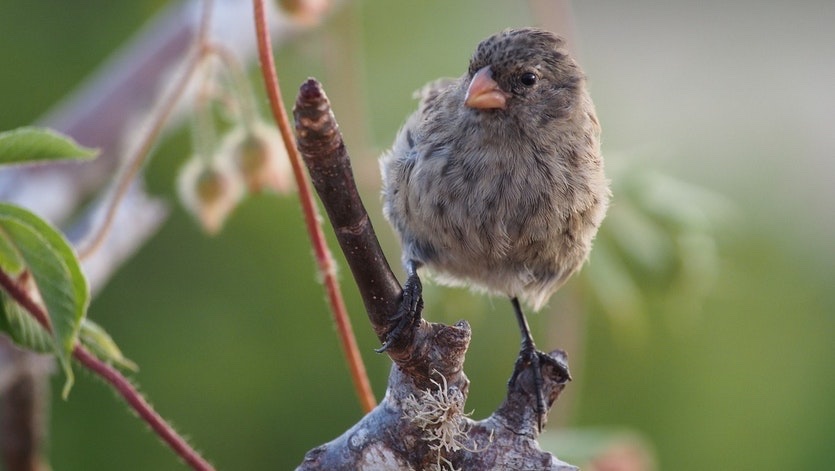
https://cosmosmagazine.com/biology/darwin-s-finches-continue-to-inform-and-confuse
7. Galápagos Mockingbird
It is a medium size bird. There are 4 recognized groups found on the main islands. They have long legs, long tail and long decurved beaks. There size varies from 25 to 28 cm. There diet varies from seeds, to eggs, to baby turtles. They rarely fly and mostly travel by foot. They also make loud and melodious sound. They are omnivores.

https://en.wikipedia.org/wiki/Galápagos_mockingbird
6. Flightless Cormorant
It is the only species of cormorant that lost the ability to fly on the Galápagos. The population is low between 700 to 800 left in the wild. There population has dramatically dropped. They measure 30 to 40 cm in length and weigh 3 to 5 kilograms. They have webbed feet, long legs and long hooked bills, highly adapted to catch fish underwater. The webbed feet help them travel underwater really fast.
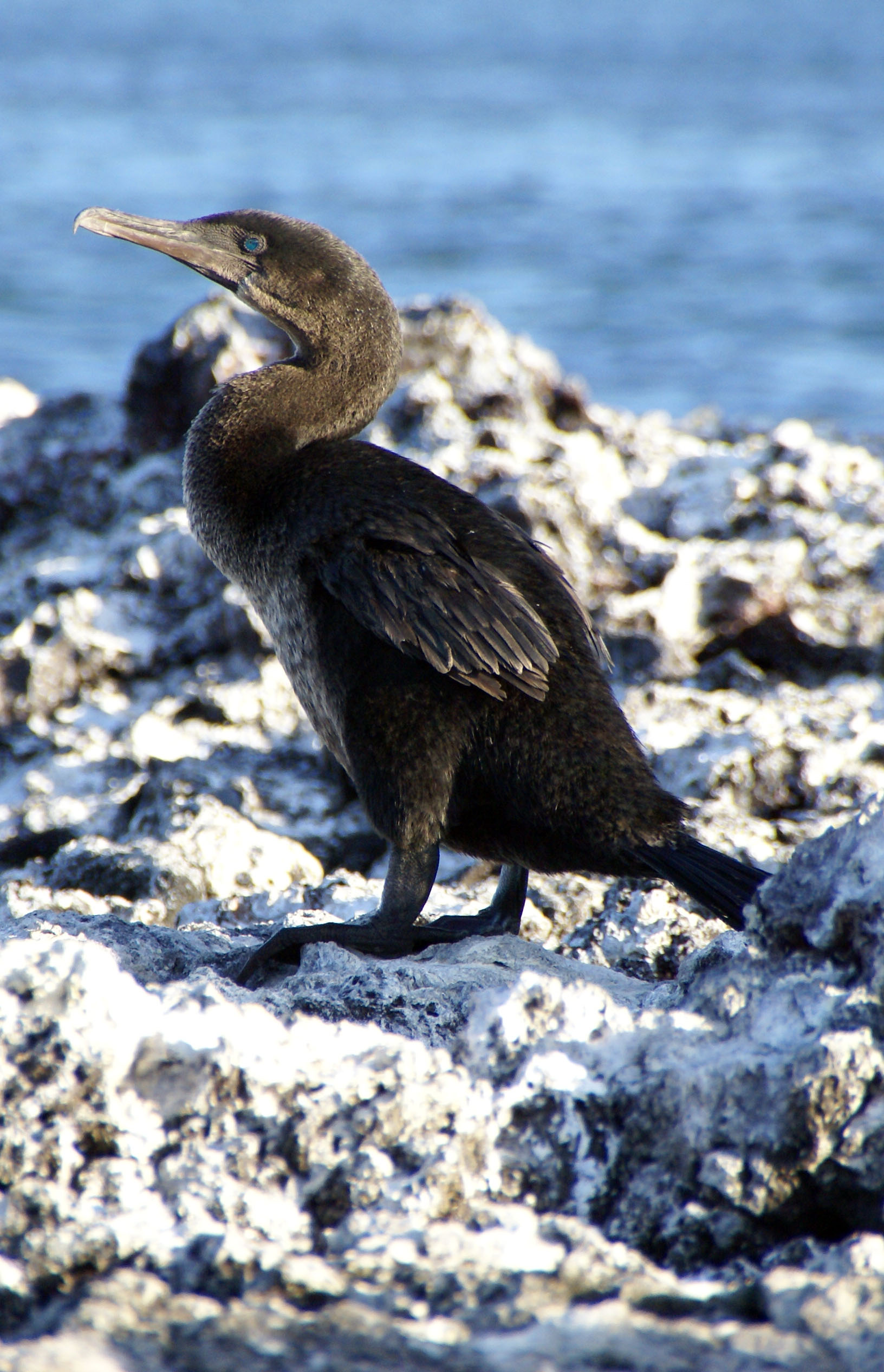
https://en.wikipedia.org/wiki/Flightless_cormorant
5. Galápagos Hawk
The Galapagos hawk is the only diurnal raptor of Galapagos Islands. They readily identified by their dark plumage and broad wings. They measure up to 27 inches in body length and have a wingspan of 47 inches. The male Hawks are smaller than the female hawks. They hunt in groups of 3. The diet of Galapagos hawk mainly include lizards, snakes and rodents. There is a low population of them.
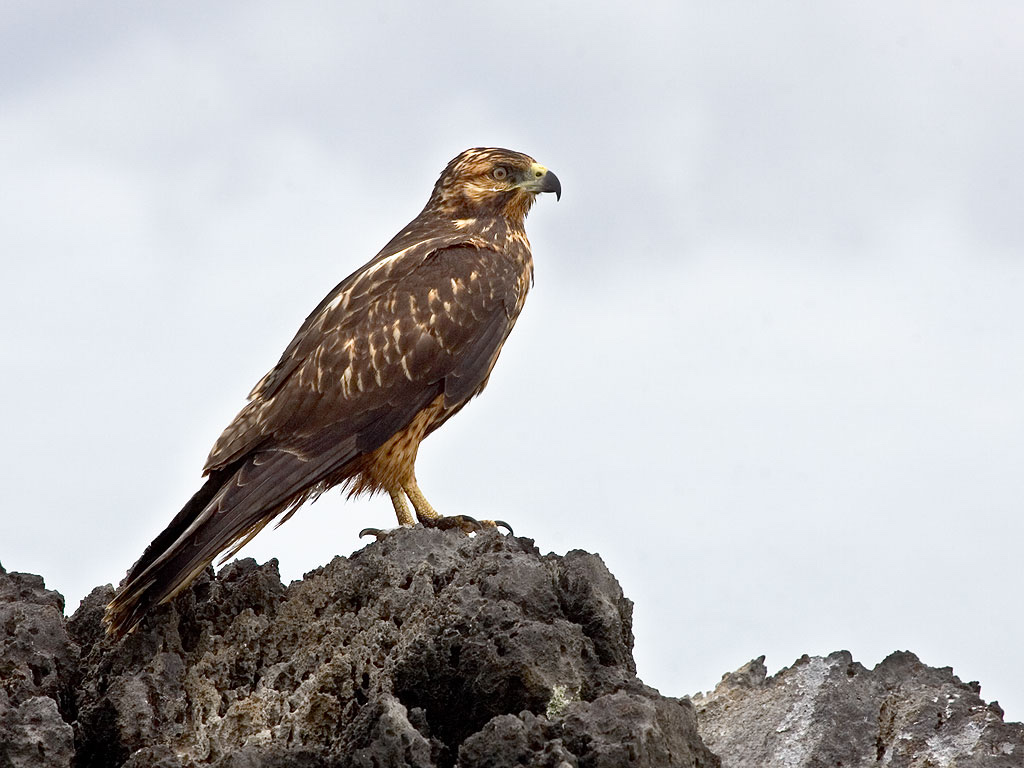
https://en.wikipedia.org/wiki/Galapagos_hawk
4. Galápagos Penguin
The Galapagos Penguin have smallest population size than any other species of penguins in the world. They survive due to the cool temperature bring by Humboldt and Cromwell ocean currents. They return to land at night. They are identified by their large bill and narrow while line around the face. They grow up to a length of 19 inches and weighs around 2.5 kilograms. They make nests usually on Fernandina and Isabela Islands of Galapagos, 50 meters away from sea. It takes 30 or 40 days for the eggs to hatch. One penguin always stay with the eggs while other go away in searching for food.
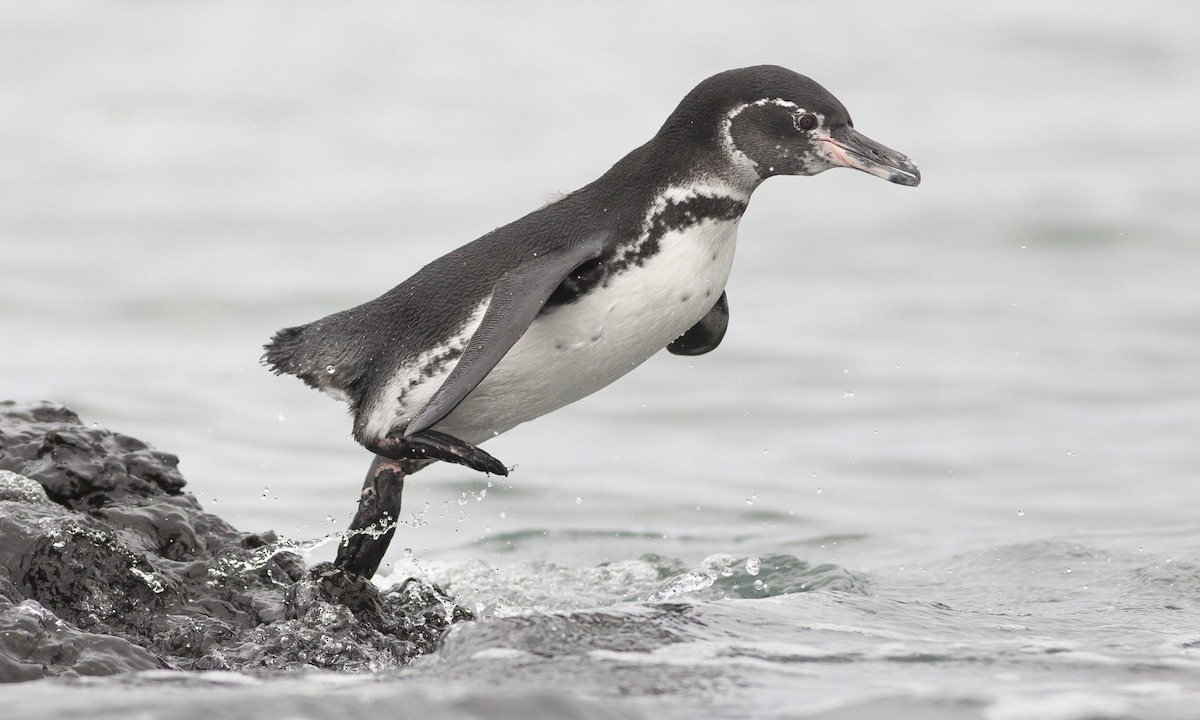
https://neotropical.birds.cornell.edu/Species-Account/nb/species/galpen1/overview
3. Galápagos Fur Seal
They are the smallest fur seals. They are widely spread in the Galapagos. The total population in Galapagos estimated at 38,000 – 40,000. They lives in rocky shores of Galapagos. They have average length of 1.5 meters and weighs up to 65 kilograms. Their color varies from black to dark brown. Males fur seals becomes so aggressive during mating season to defend other males from their territories. They spend most of their lives at sea.

https://galapagosconservation.org.uk/wildlife/galapagos-fur-seal/
2. Marine Iguana
They found in grey or black colors. The coloration of Marine Iguanas also changes to green or red during mating season. Marine Iguana can’t move effectively after they return to shore from the sea. It is because their body temperature falls down (up o 10 degree celcious) on diving into the sea. The regain normal body temperature by baking in the Sunlight. Galapagos hawks and sea birds are main predators of Marine Iguanas.
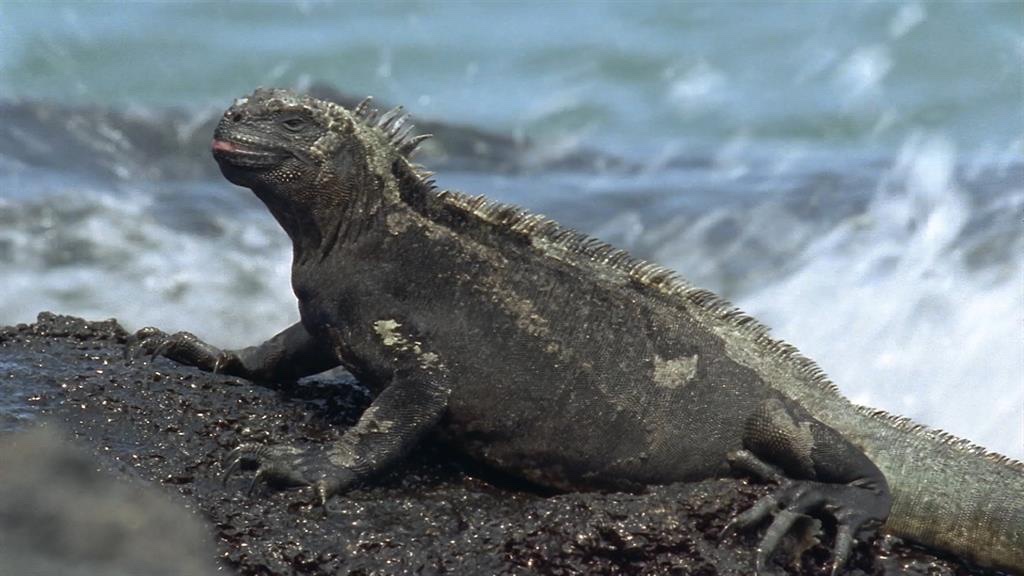
https://www.nationalgeographic.com/animals/reptiles/m/marine-iguana/
1. Galapagos Tortoise
They are the largest living tortoise and one of the longest living animals in the world. The word Galápagos means tortoise in spanish. They are native to main Islands of Galapagos. They have average life span of 100 years or more. Galapagos tortoises are now listed as an endangered species, only 15,000 remains today. They have no natural predators. Interestingly they can live up to one year without food or water. It is because of slow metabolism and large internal store of water. They mainly feed on grass, leaves and cactus.

https://en.wikipedia.org/wiki/Galápagos_tortoise